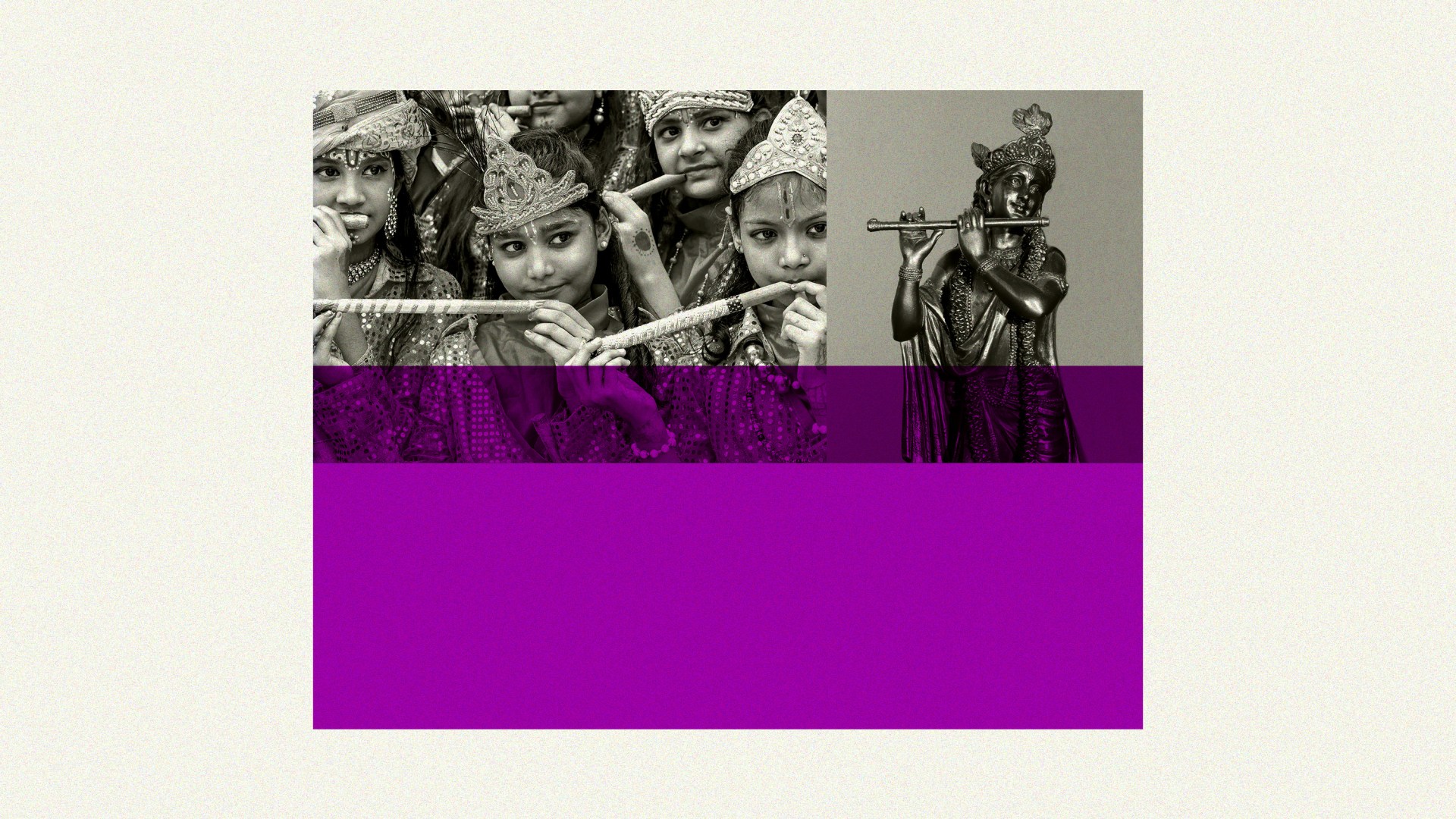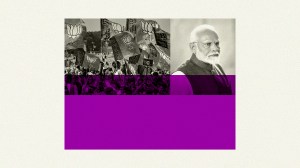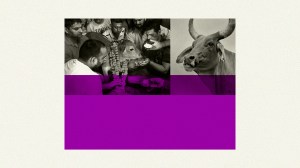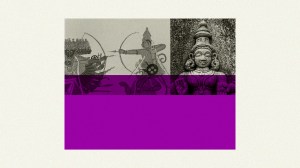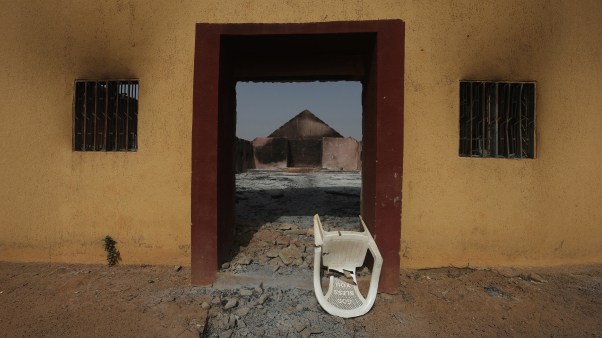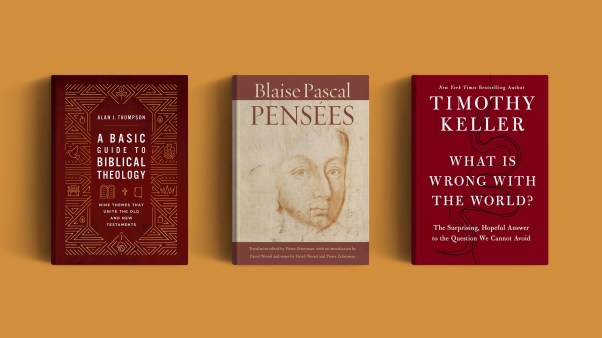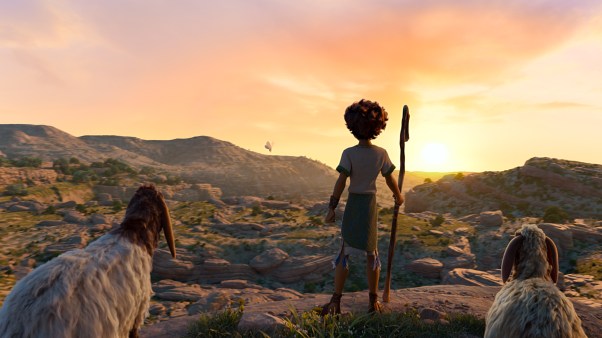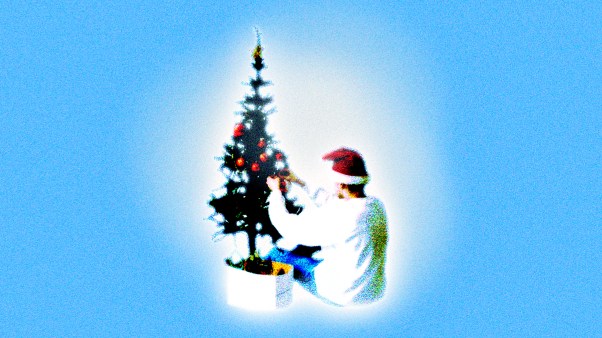In this series
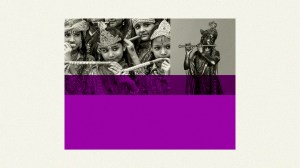
(This is the first in a series.)
Krishna Janmashtami, a two-day festival beginning this Friday, is a happy day for 1.2 billion Hindus, 95 percent of whom live in India. It’s the day they say a deity took on flesh 5,000 years ago as Krishna, often shown in his blue skin playing a flute and standing near a sacred cow.
Colorful customs surround the festival: “Devotees offer Lord Krishna banta bhog, or milk products, and then Lord Krishna is given a bath between 8 and 10 in the morning. After the bath, Lord Krishna is dressed in yellow colored clothes and ornaments made of flowers.” Worshipers dance around a Krishna idol—the Hindus I met in India don’t shy away from the i-word—and offer it sweets.
Swami Vivekananda’s explanation is classic: “For the quivering and unsteady mind, there should be a visible form or a symbol, the idol, so that it becomes a foundation for his adoration … a vessel which enables a man to drink the milk.” Every Hindu family can have its own shrine, its own worship, and its own choice of what to worship.
Relax, Hindus say, when a monotheist wonders about their penchant for worshiping numerous deities. Hindus say that when they worship those small deities, they are actually bowing to Brahman, the impersonal ultimate reality, the world soul. They say the idols merely represent various incarnations and manifestations of the supreme deity and function in a way analogous to clothes: People wear different ones in different situations.
Some Hindus also say their numerous names for deity signify not confusion but an intimate knowledge of divinity. One analogy: Not only the Inuit in Canada but also many others have dozens of names for snow because they know snow intimately in its variations but still understand that all of it is essentially the same. Hindus say the existence of multiple forms of deity manifests what they see as a variety of spiritual forces.
The supreme being, they say, is a force without starting point or end that manifests itself in different ways. To meditate on the supreme, people use finite capabilities to absorb infinite manifestations, which is impossible. Therefore, that which is infinite appears in billions of ways to help humans visualize it. Think of billions of photos of the same person in different poses rather than billions of photos of different people.
Since Hindus worship multiple forms of deity, they can choose the form that works best in each specific instance. For example, Hindus looking for tenderness worship a motherly goddess figure and say that in doing so they can more easily attribute those sentiments to the deity they envision. Hindus say it’s important to give devotees a tangible object for worship.
Moreover, variety is the spice of Hinduism. Urban temples in India typically have many objects of worship. Loudspeaker-blared music, drums, food-and-merchandise sellers, and a variety of booths provide the backdrop for making fruit and vegetable sacrifices to major powers, popular local deities, and even dancing cobras.
Another way to understand Hinduism is that the name itself arose to describe a place, not a religion. The Indus River starts in Tibet, flows through India, and ends in Pakistan. Hindush became the easternmost Persian province in the sixth century BC. Sometime after AD 600, Arabic texts referred to Hind, the land beyond the Indus. A millennium later, English merchants used Hindoo to describe the people they met in the subcontinent. Confronted by numerous variants of polytheism, they started referring to all the strangeness as “Hindoo religion.”
It’s as if travelers referred to all the streams of Greek, Norse, and other European mythology as “Europeanoo.” Besides, as Mahatma Gandhi once said, any believer in anything can “still call himself a Hindu.” Bal Gangadhar Tilak, whom Gandhi called “the Maker of Modern India,” defined Hinduism in 1915 as “acceptance of the Vedas [the most ancient Hindu scriptures] with reverence; recognition of the fact that the means or ways to salvation are diverse; and realization of the truth that the number of gods to be worshipped is large.” India’s Supreme Court in 1966 and 1995 called this an “adequate and satisfactory definition.”
The Vedas (“knowledge”) are ancient Sanskrit poems written between 1500 and 500 BC, about the same time Moses and his successors composed the Old Testament. If the universe is one unitary, organic whole, with no creator-creation separation, the Vedas don’t explain why and how all creatures at some point separated. The Vedas do suggest that we will find no true, lasting happiness until we lose our individuality by becoming reabsorbed into the cosmic whole from which we came.
In the meantime, the idea is to perform rituals as “a bridge between the human realm and the spiritual plane.” The most popular potential helper is Vishnu, often depicted with multiple arms or heads that allow him more opportunity to protect people. Multiple arms indicate omnipotence, dominance in all directions. Multiple heads suggest omniscience.
Followers of Vishnu, “the preserver,” say he comes to earth in human form as different avatars to save his followers from tyranny or natural disasters. For instance, believers say he came in the form of a boar to destroy one demon; in a half-man, half-lion form to defeat another; and as a dwarf to beat a demon king. Krishna is the eighth avatar of Vishnu.
The other two more popular deities are Brahma (“the creator”) and Shiva (“the destroyer”). Hindus refer to the three not as a trinity but as the Trimurti and use the sound Om as a summary of them, as well as a tool for meditation. In 1970, when tear gas broke up an antiwar demonstration in New Haven, Connecticut, I sat by Beat poet Allen Ginsberg as he calmed himself by repeatedly chanting “Om.”

